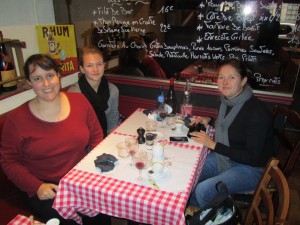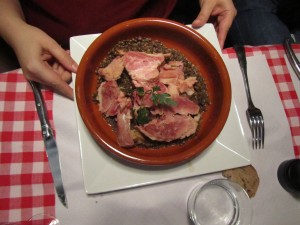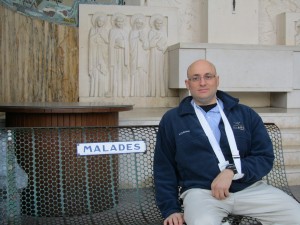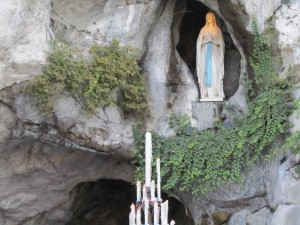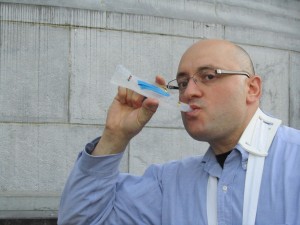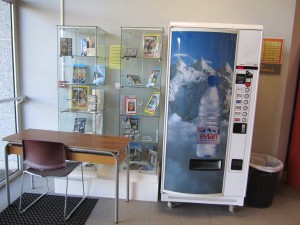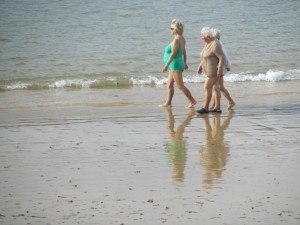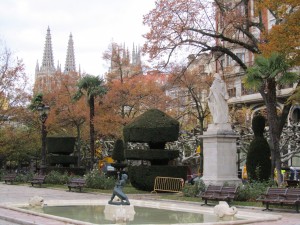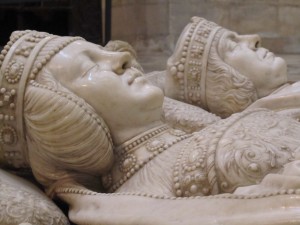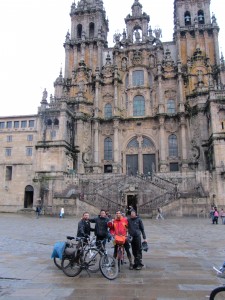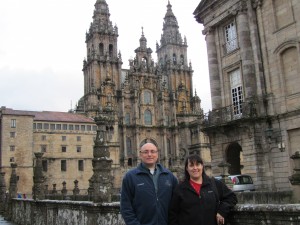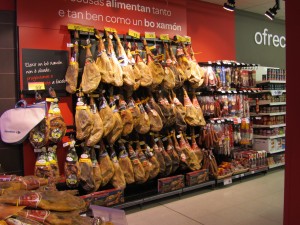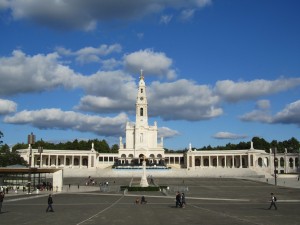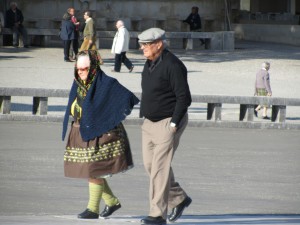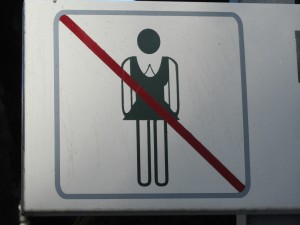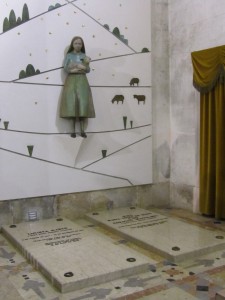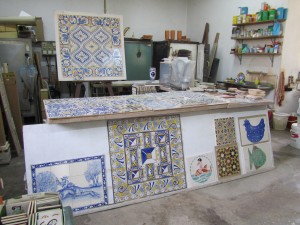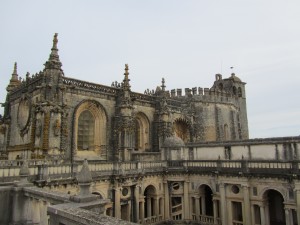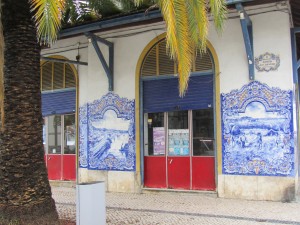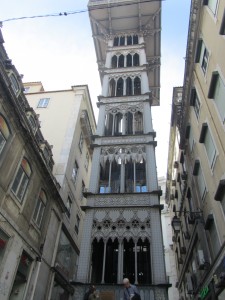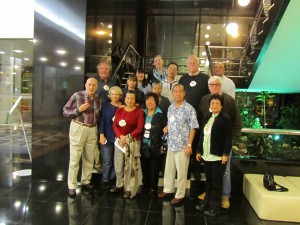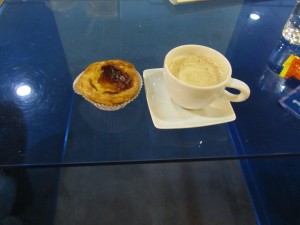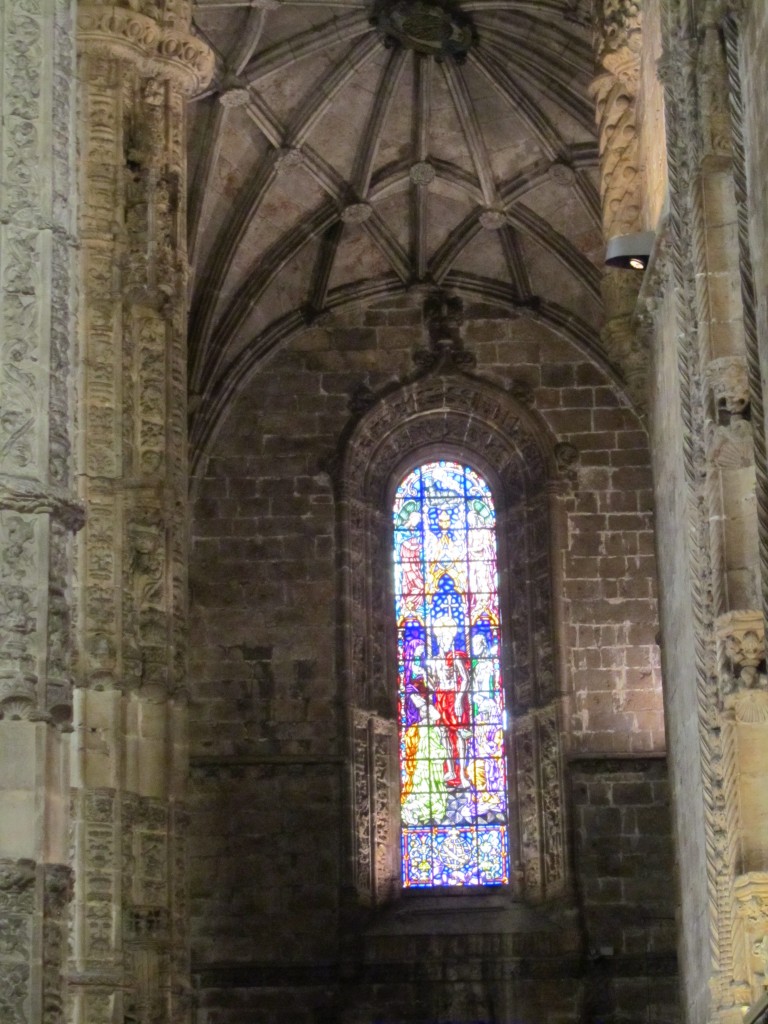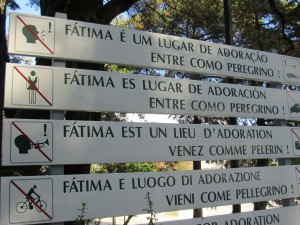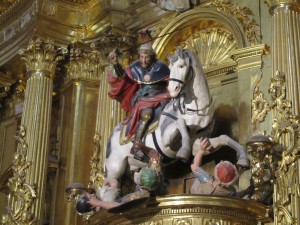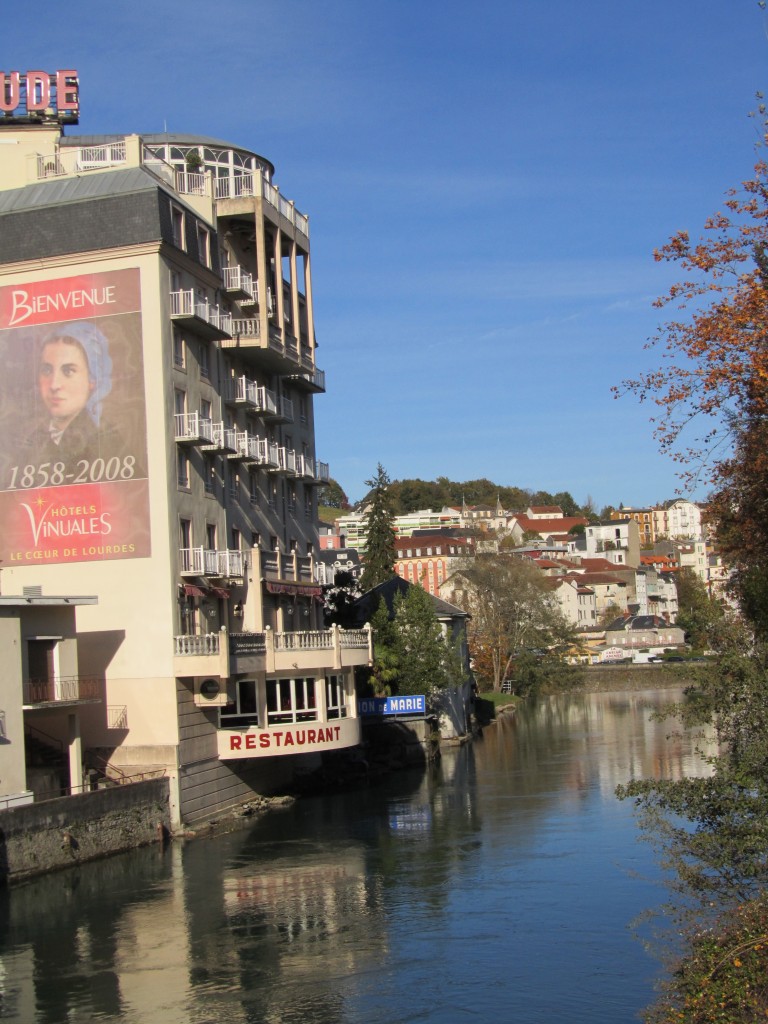Pilgrimage Tour 2011 (France/Spain/Portugal)
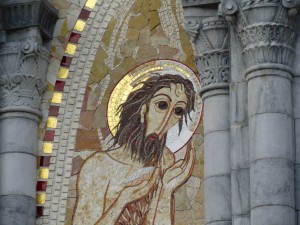 We call this our “secular pilgrimage” tour because we visited religious sites on a group tour organized by a non-religious company (Go Ahead Tours). Everyone on our tour was a believer (or at least raised as one), but we were mixed group in terms of the depth of our devotion. A church-sponsored tour with daily masses and group kumbaya would not have been appropriate for us, so this was just the right speed. Those who wanted to bathe in the waters at Lourdes certainly had their chance, but even a skeptic would enjoy the itinerary (though be rather unlikely to choose it)
We call this our “secular pilgrimage” tour because we visited religious sites on a group tour organized by a non-religious company (Go Ahead Tours). Everyone on our tour was a believer (or at least raised as one), but we were mixed group in terms of the depth of our devotion. A church-sponsored tour with daily masses and group kumbaya would not have been appropriate for us, so this was just the right speed. Those who wanted to bathe in the waters at Lourdes certainly had their chance, but even a skeptic would enjoy the itinerary (though be rather unlikely to choose it)
11 November
Picked up at CDG by our friend Anne and her daughter Camille (who have the day off since it is Armistice Day).
We go for a delicious lunch at Bistro La Tete de Goinfre (the hog’s head). Small, casual and authentic, we had a delicious smoky piece of pork cooked in lentils and a duck leg confit.
Afterwards we tried to hit Abercrombie and Fitch near le Champs d’Elysees, but there was a huge line to get in, as there was for hot chocolate at Angelina. Walked all around the city before dinner back near the hotel with our tour group from Go Ahead Tours. Our hotel is Renaissance la Defense, a very nice hotel and close to a mall and the metro but no fun at night.
12 November
Because of the holiday the outdoor markets are off, but we walked down Rick Steves’ favorite Rue Cler and over to take pictures by the Eiffel Tower. The gypsies are out trying to collect signatures for some cause, which someone pointed out to us is a good way for them to get a spot-on match for your signature while they pickpocket your wallet.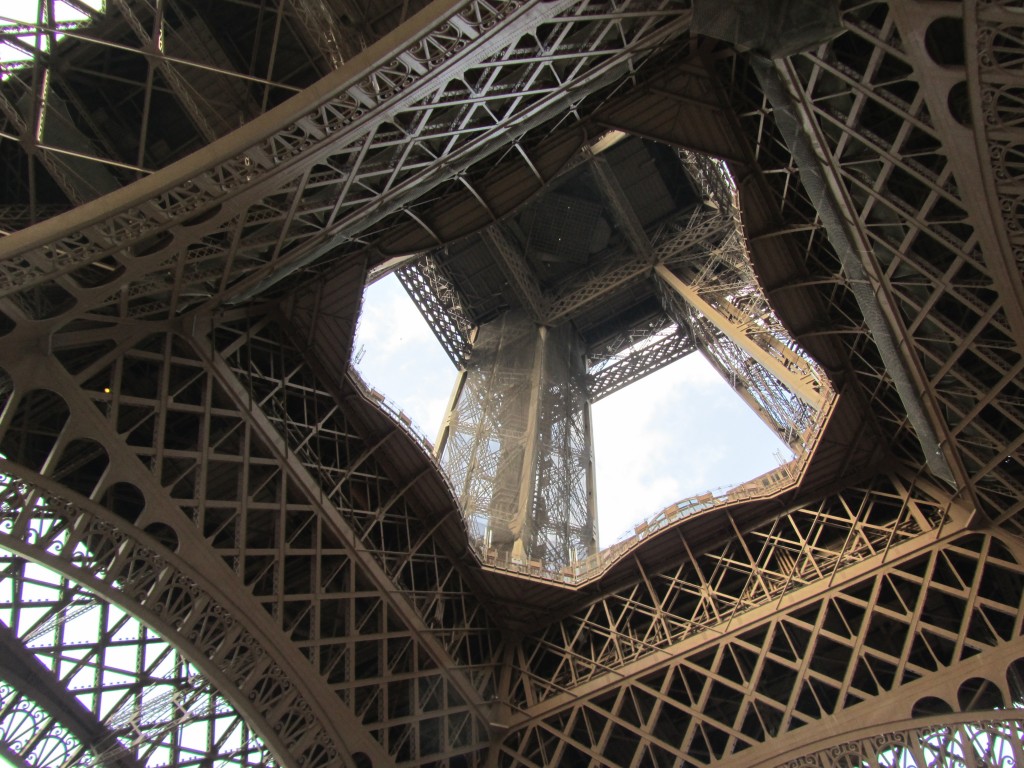
We shop at a super market across from the TGV station (Montparnasse) to grab food for the train ride to Lourdes. The St. Emilion cheese (a raw, sheep’s milk cheese) is amazing. Second class on the TGV is not nearly as nice as our 1st class trip to Grenoble a few years ago but still pretty comfortable. We arrive to Lourdes at night and note that almost all shops and restaurants are now closed for the season. We ate dinner at Pizza da Marco at 47 rue de la Grotte (seemingly the best of few options and decent).
13 November
Tour of the religious complex at Lourdes. The large and modern underground church is impressive, and one can imagine what it must be like at the peak of pilgrimage season when crowded. Now it is quiet and peaceful but still with enough pilgrims to feel a sense of community, particularly down at the grotto where people go to pray and light candles.
To go to the baths you have to get naked and sit in cold water. Neither condition appealed to us, so despite the need to heal a broken arm and bulging cervical disc we skipped that.
For lunch we have crepes and explore the rest of the small city. We purchase a virgin bottle to drink our holy water.
We hike up to the fort but don’t go inside and then visit the Bouly Mill, where St. Bernadette spent the first 10 years of her life. Back at the sanctuary visitor center we watch a film about Bernadette and Lourdes (you need to reserve a time in your preferred language at the visitor’s center), but we were all so tired that we fell asleep.
The brochures of our hotel, Mercure, tout that it has been “recently renovated,” but I suppose recent is a relative term. Dinner at the hotel is “basque” style pork and lasagna and about the quality you’d expect for a group meal, i.e. not good.
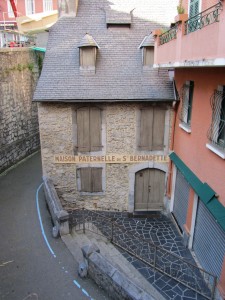 The evening walk to the grotto is peaceful, and the church lit up at night is an inspirational site. There are far fewer people there in the evening, so it is a chance to touch the grotto walls, which are worn smooth after 150 years of being touched.
The evening walk to the grotto is peaceful, and the church lit up at night is an inspirational site. There are far fewer people there in the evening, so it is a chance to touch the grotto walls, which are worn smooth after 150 years of being touched.
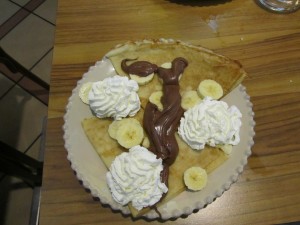
Candles are available for purchase for just a couple of Euros for a thin one up to 160 for a thick one that will burn for many days. During high season the care takers blow candles out and store them away so they can be put out during low season and ensure that candles are always burning,
14 November
En route to Spain we are thrilled for a pit stop at an AutoGrill, nicely appointed like its Italian mother shops but not as good. Don Quixote must be proud that the Spanish have installed so many power-generating windmills around their countryside.
Our tour guide in San Sebastian is a Dali lookalike minus the crazy moustache. He takes us past the nude beach, but in November not even crazy Germans are out there without clothes (but a few are braving it with swimsuits). After our city tour we head down Fermin Calberton, a street riddled with bars serving pintxos. 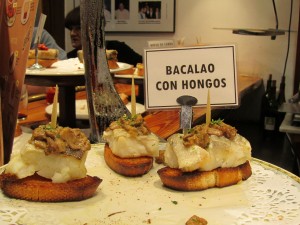
We were told to just help ourselves and then tell the cashier what we ate but then we were scolded for taking this approach. Rick Steves said the same thing, but this is just reminiscent of bad experiences with Spaniards in years gone by. I don’t know why everyone knocks the French when other Europeans can be just as rude/obnoxious. The food is good, though – like jamon iberico with mango and a variety of seafood concoctions.
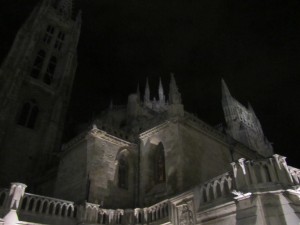 In Burgos by evening and ready for dinner before any restaurants are open. We end up with an okay meal in a place recommended by locals, but the desserts were very good (included a fried leche/milk dessert that was alike a custard and a flan tower with chocolate cake on top). Our Grand Hotel Silken is really great and modern with lots of fun toiletries.
In Burgos by evening and ready for dinner before any restaurants are open. We end up with an okay meal in a place recommended by locals, but the desserts were very good (included a fried leche/milk dessert that was alike a custard and a flan tower with chocolate cake on top). Our Grand Hotel Silken is really great and modern with lots of fun toiletries.
15 November
Excellent hotel breakfast with little tapas and things with ham. City tour with enthusiastic and knowledgeable guide who takes us to many interesting buildings.
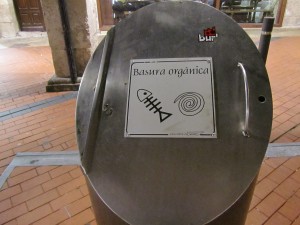
Residents of Burgos drop their trash into sorted bins around the city, and then they get processed through underground tunnels.
At petrol station stop we buy a bag of ham-flavored potato chips, but they are not all that hammy. Arrive in the evening to Santiago de Compostela and walk into the historic center in the rain for one of the worst meals we have ever eaten at any restaurant anywhere in the world. Tried to talk mom and dad out of eating in a place with a cheap tourist menu, and mom’s 10 Euro salmon was gray and horrific. Of course others in our group ate at the restaurant we thought looked good, and they loved it.
16 November
Rainy morning, but it is a beautiful city. We met a pilgrim getting her final stamps at the pilgrim office and she told us about her journey. Later we saw a group of 4 Spanish guys all covered in mud who had just finished their 600 km trip along the way on bike.
In the cathedral we walked up to hug the statue of St. James. Very different to be there in the off season than 25 years ago when I was there for the feast of St. James, when the city is lively but crowded. There were not swinging the giant incense ball today since no one had paid for it (they need enough people to make a donation to get the number of people they need to swing it).
Ate lunch at a good but sorely overpriced restaurant that had been recommended by a friend from L.A. Had a good paella and a giant plate of mixed seafood. We walked around the historic center until we’d felt we had deserved a churros with hot chocolate break, which was a real treat.
For a laugh we bought the “tetilla” naughty-shaped local cheese, which is actually delicious. I also bought a couple of leather belts for 10 Euros. We had cheese and ham and 1 Euro wine back at the hotel for dinner.
17 November
Long ride to Portugal. We see what look like little mausoleums in many back yards, but they turn out to be grain storage sheds. As we arrive to Fatima we are struck how what was a nothing farming village is now a major pilgrimage site filled with modern hotels.
Portuguese pilgrims still arrive in traditional dress to make their way to the basilica. The modern underground church is well done (the mosaic artist is the same that created the exterior at Lourdes). Inside the old church are the tombs of the three children (Sr. Lucia was transferred there after a year buried in her convent’s cemetery).
A highlight of the trip is a visit to the village where the little cousins were born and tours of their houses. One of Lucia’s nieces (Maria dos Anjos), aged 92, is still alive and is gracious enough to spend the day in the yard of her family’s home. She sits near the spot where the children saw the angel, and she is happy to greet pilgrims and take pictures with them.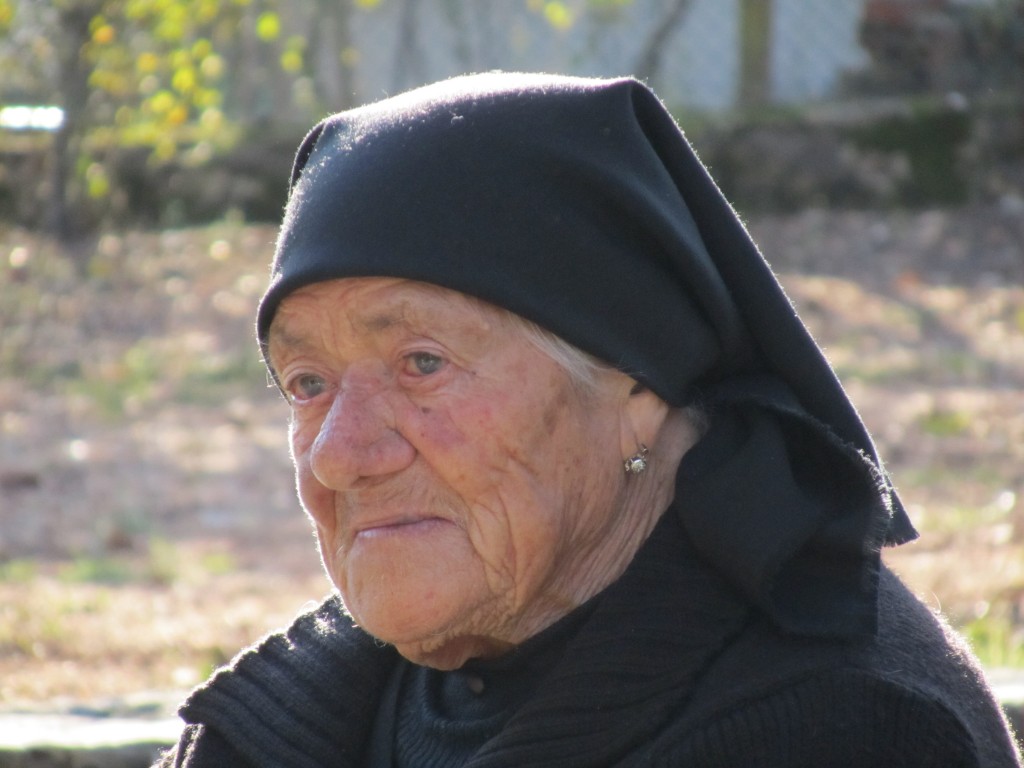
Then we walk along the Stations of the Cross area where the children saw the archangel.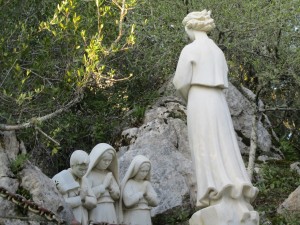
At the sanctuary, the new church has mosaics by the same artist who did the façade at Lourdes. The highlight of the basilica is the burial place of the 3 children.
After dinner we returned to the partially open-air chapel at the side, on the site of the Cova where the Marian apparitions happened. Since it was cold we sat far in the interior, which it turns out is the spot where they pick the people to say decades of the rosary in different languages. 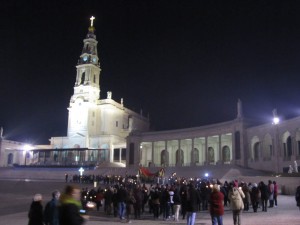
The priest motioned to us and asked if we were Italian, but we said we were Italian-Americans who don’t know how to pray in Italian. Though he seemed a bit dismayed at that, we said that we had a member of our tour group (our friend Laura) who could pray in English, and she was sent up to the altar (to the dismay of a Portuguese mother and young daughter who seemed to know this was the place to sit, but we scooped them).
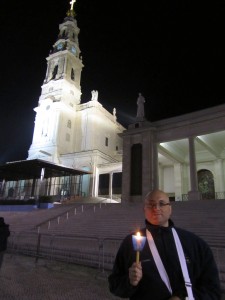 Despite the fact that pilgrimage season is over, there are still a few hundred people at the service and therefore the candlelight procession is on. You can buy candles at the sanctuary before the service or from any of the shops in the town (the sanctuary candles are very good quality and benefit the site). The procession has full regalia and walks around the piazza and then back to the chapel, and it is very inspirational.
Despite the fact that pilgrimage season is over, there are still a few hundred people at the service and therefore the candlelight procession is on. You can buy candles at the sanctuary before the service or from any of the shops in the town (the sanctuary candles are very good quality and benefit the site). The procession has full regalia and walks around the piazza and then back to the chapel, and it is very inspirational.
18 November
For 3.65 Euros each way to take the city bus to Tomar, about 50 minutes away. Nuns, school kids, shoppers and commuters are our company (and no other tourists). Because of the bus schedule you need to either spend just about 3 hours in town or else spend the whole day there. We “did” Tomar and spent the whole day.
The star attraction in the town is the UNESCO World Heritage Site Convento del Cristo. It was a little difficult to find the entrance (which is poorly and incorrectly marked), and given that we were among just a handful of visitors that day you’d think the personnel would be a little less rude about giving us directions… 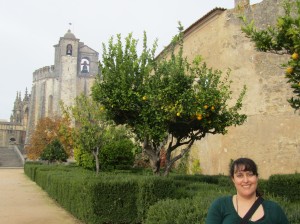
It was well worth the hike and the confusion! It’s an old Knights Templar castle, and the grounds are lovely as well. There is a good and well-priced café within the walls.
The convent is huge, and we had the place pretty much to ourselves to casually explore. The circular, frescoed chapel is unique and beautiful, and the cloisters are large and impressive.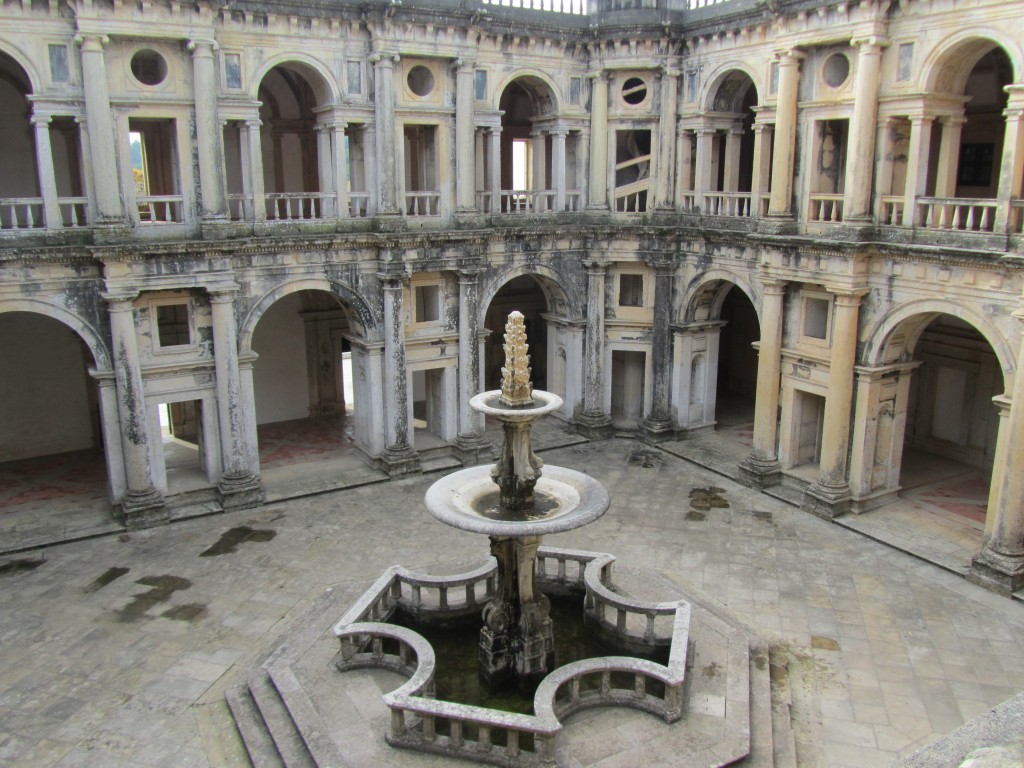
The main street in town has some nice shops and just a few restaurants. We had a decent meal of typical Portuguese food, and we were given a complimentary glass of Port after our meal.
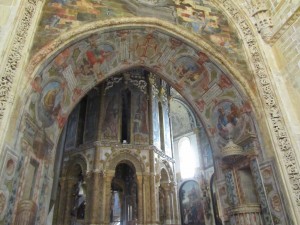 We visited all of the town sites, including a historic water wheel, a tiny 15th century synagogue, a tile workshop and Europe’s largest museum of matchbooks! We joked about the matchbook museum (Museu dos Fosforos, which is near the bus station) all day, but it was quite delightful (and free)! Of course we also saw several churches and wandered around a cemetery.
We visited all of the town sites, including a historic water wheel, a tiny 15th century synagogue, a tile workshop and Europe’s largest museum of matchbooks! We joked about the matchbook museum (Museu dos Fosforos, which is near the bus station) all day, but it was quite delightful (and free)! Of course we also saw several churches and wandered around a cemetery.
The cemetery was reminiscent of La Recoleta in Buenos Aires in that many of the mausoleums are in a state of slight disrepair and you can pretty much stick your hand inside and touch the dusty old coffins.
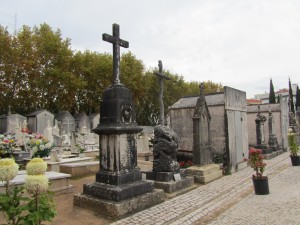 I guess if you’re going to have your casket on display for perpetuity you might as well get a fancy one decorated with brass angels and whatnot. Like in other European mausoleums many have photos of the inhabitants on a small shelf, which acts like a little altar.
I guess if you’re going to have your casket on display for perpetuity you might as well get a fancy one decorated with brass angels and whatnot. Like in other European mausoleums many have photos of the inhabitants on a small shelf, which acts like a little altar.
19 November
Long bus drive to Lisbon with a stop along the way in Santarem. The town church has a glass vial filled with miraculous dried blood (some spiritual folklore about how a sorceress told a woman to steal the host so she could make a potion out of it but then it started gushing blood). If you are so inclined you can climb a rickety ladder and kiss the reliquary. You can read the whole tale here.
We got some delicious and inexpensive cheese at the covered market. The building is covered with beautiful tiles.
The Lisbon city center is busy on this sunny Saturday. We have a bad lunch and terrible chestnuts roasted on an open fire.
Our culinary interests were satisfied, however, by purchasing some treats from a regional specialties tent near the port. We bought some dryish, not overly sweet bread and dipped it in jeropiga, a sweet wine served in a little plastic cup for 50 cents. We ended up going back and buying more and more. This was hands down the most delicious thing we ate in Portugal, and of course goes with our philosophy that the simplest thing is usually the best.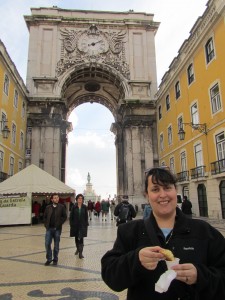
Our afternoon tour took us to the old Alfama district and then to see the coastal sites such as the huge monument to the explorers. Though we saw a lot of churches on this trip, we still had room to see the fabulous Jeronimos Monastery, also a World Heritage monument and the final resting place of Vasco de Gama. Here all the outside vendors are hawking cheap scarves, begging the continual question, “Wouldn’t you do better if you sold a different souvenir than the one sold by every other vendor?” If textiles are your thing, how about an apron, potholder or hat?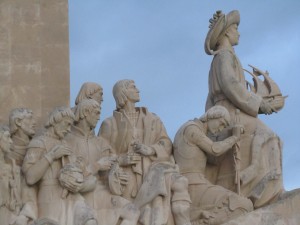
This was the final day of the tour, and we had our farewell dinner at the hotel.
20 November
We decided to spend a lazy Sunday like a local with a bit of a sleep in and a leisurely breakfast . We walked to the shopping mall with El Corte Ingles and bought tickets to see “Tower Heist.” The cinema is comfortable, with a large screen and not too crowded (understatement – there were 6 people including us).
Lunch in the food court leaves us happy to be leaving Portugal, where they serve something called “exotic pizza,” where the special topping hidden under the cheese is tuna.
